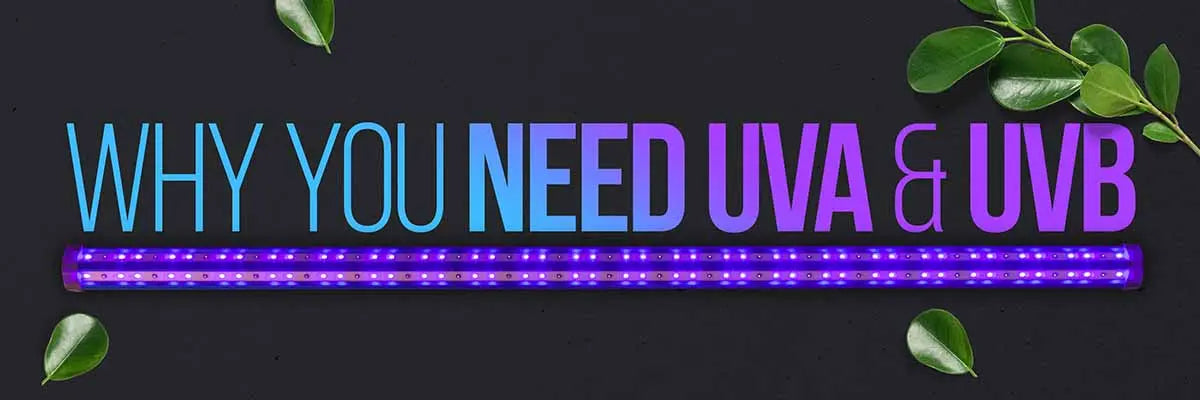LEDs have come a long way in the last few years. We’ve reached a point now where lighting fixtures are outputting spectrums that are almost identical to natural sunlight, while running at jaw-dropping efficiency levels. So how do we carry on pushing things to new heights? The answer is lies with ultraviolet rays. The team at Maxibright have recently added UV bars to their range, making it easier than ever to experiment with UV in your grow space.
What is Ultraviolet Light?
Ultraviolet light (UV) is invisible to humans but is known to have profound effects for plants. UV can be divided into three rough categories.
- UVA sits closest to humans’ visible range, lying at 315nm to 400nm. When you get a suntan on a hot day, the change in your skintone comes as a result of UVA exposure.
- UVA accounts for 95% of the UV light that reaches the earth from the sun.
UVB sits at 280nm to 315nm on the electromagnetic spectrum. UVB is more damaging than UVA for humans, but it’s particularly useful for plants at the right exposure levels. - UVC has a very short wavelength, coming in at around 100nm to 280nm. It’s extremely dangerous and should be used with caution. Fortunately, UVC is filtered out by the earth’s atmosphere, so it poses no risk to humans day to day. Its destructive powers can be harnessed for use in sterilisation, as UVC has the most powerful effects on microorganisms.
How Can it Help My Indoor Garden?
So, it’s clear that we don’t want to be hitting our plants with UVC, but adding the right doses of UVA and UVB can be highly beneficial. Technically, UVB light is damaging to plants, as well as humans. On the surface, this sounds like a bad thing, but plants respond to this added stress by accelerating essential oil production as a defence mechanism. This heightened oil production increases the size of your harvest while improving flavours and aromas. That’s because most plants contain a protein which reacts to ultraviolet light, called UVR8. Once UVR8 has been exposed to ultraviolet light, its structure changes slightly, which acts as chemical signal to induce plants’ stress responses, causing them to toughen up. For this reason, ultraviolet light exposure can increase active plant compounds by 20% - 35%.
UVB is also a great addition for growers experiencing issues with powdery mildew. Powdery mildew is a fungal infection that infests leaves, drastically slowing down photosynthesis rates and, in turn, overall growth rates. UVB has a sterilising effect on fungi that prevents infestations and helps to treat existing cases. Powdery mildew can be hard to tackle, especially if you’re having difficulties controlling humidity levels. Adding UV lighting is one of the most effective ways to deal with the problem.
Pests hate UVA, so it has a similar impact on bug infestations. It won’t completely solve the issue, but it will definitely help to keep them under control, thinning down populations and protecting plants.
Many growers are unaware that UVA exposure also reduces stretching. Adding UVA makes a noticeable difference to the length of internodes, keeping plants tighter and more compact. This makes your indoor garden easier to manage and uses the grow space more efficiently, helping to maximise yields.
Introducing the New Maxibright UV LED
Maxibright’s new UV LED fixture contains 40% UVA and 60% UVB, giving you the best of both worlds. You can clip it onto your existing 660-watt LED fixture or use the supplied V-hangers and run them alongside other lighting systems. Just remember to run your UV equipment from separate timers because they’re designed to operate for shorter timescales. Many growers start with 15-minute daily bursts and work their way up gradually.

